The Other
2017/2019, Single-channel Film
Single-channel Film, looped 12:30 min. (as a film: 13:43 min.), color, stereo sound, format 21:9, 4K full HD projector, active speakers, BrightSign
Copies: 3 + 1 AP

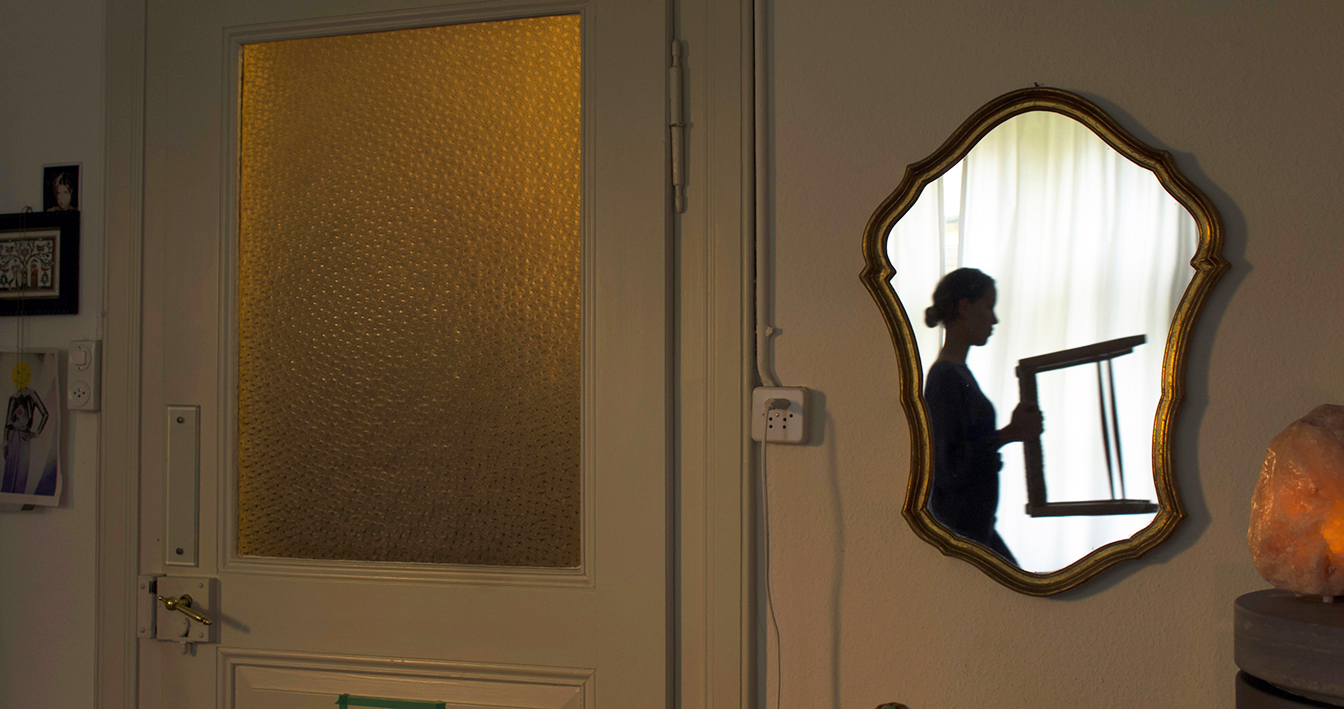

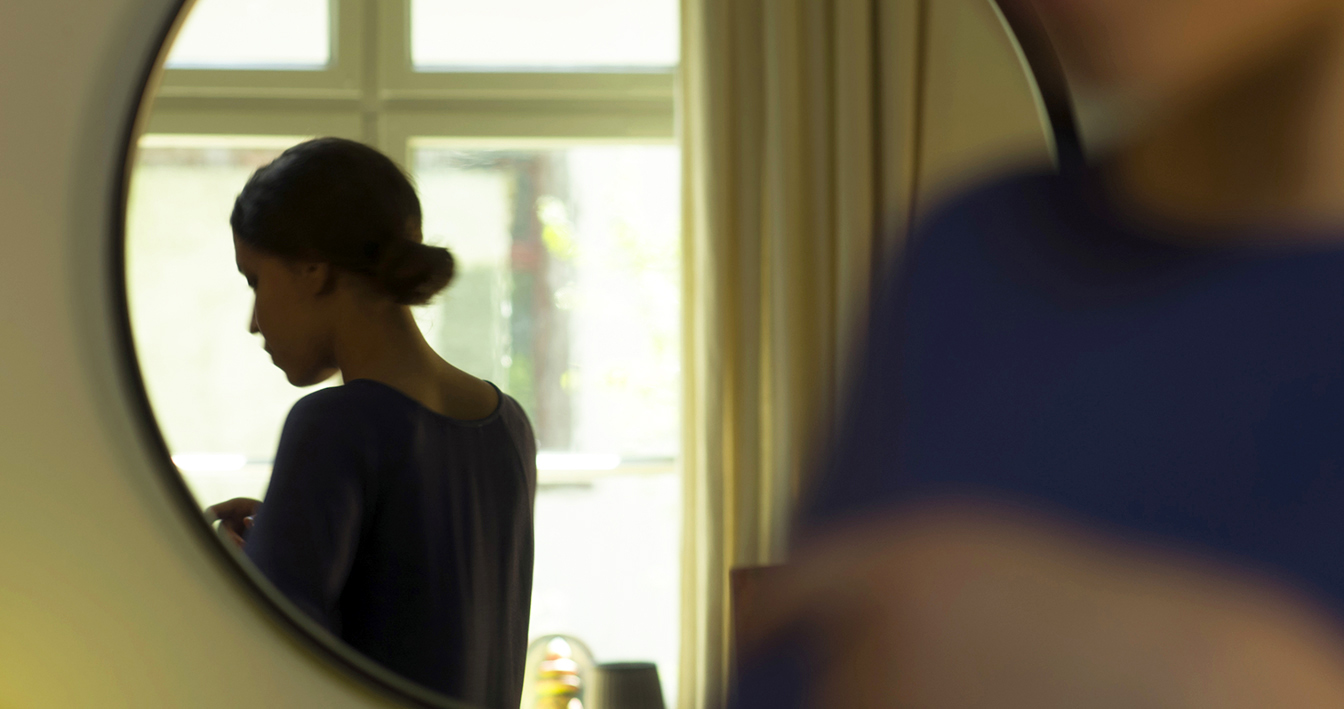
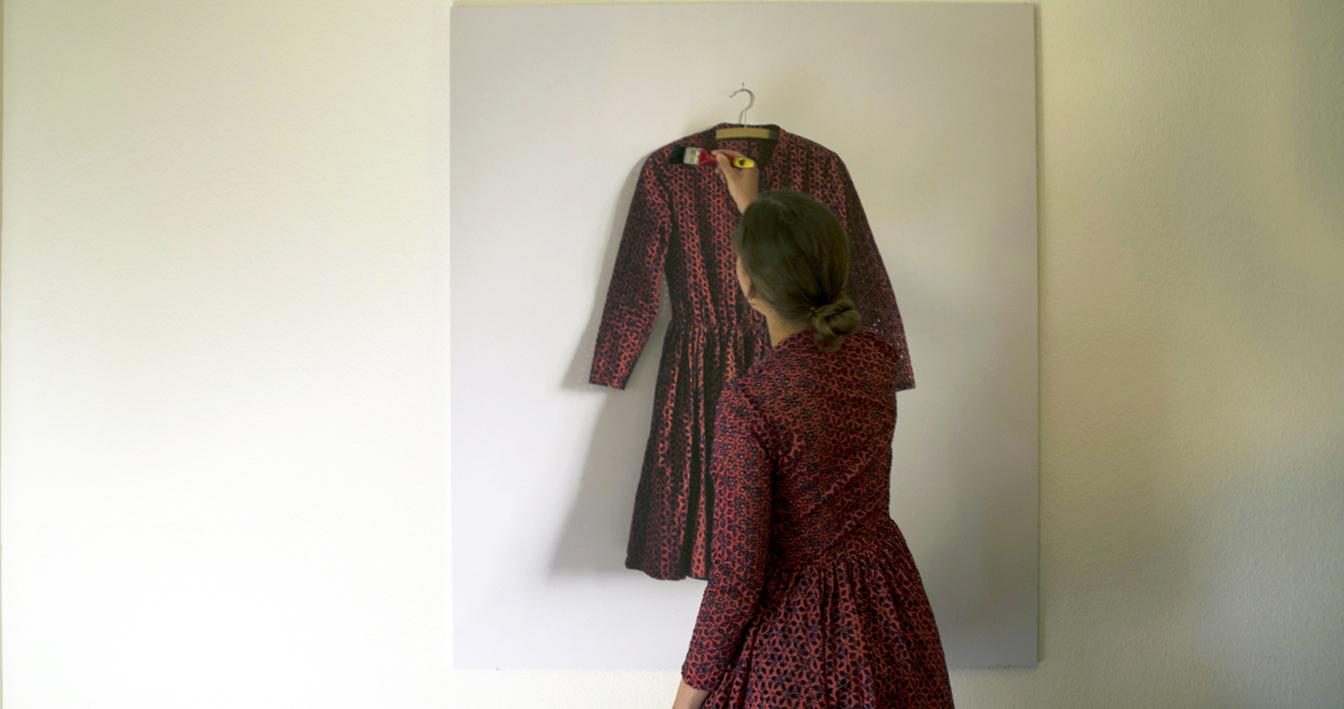
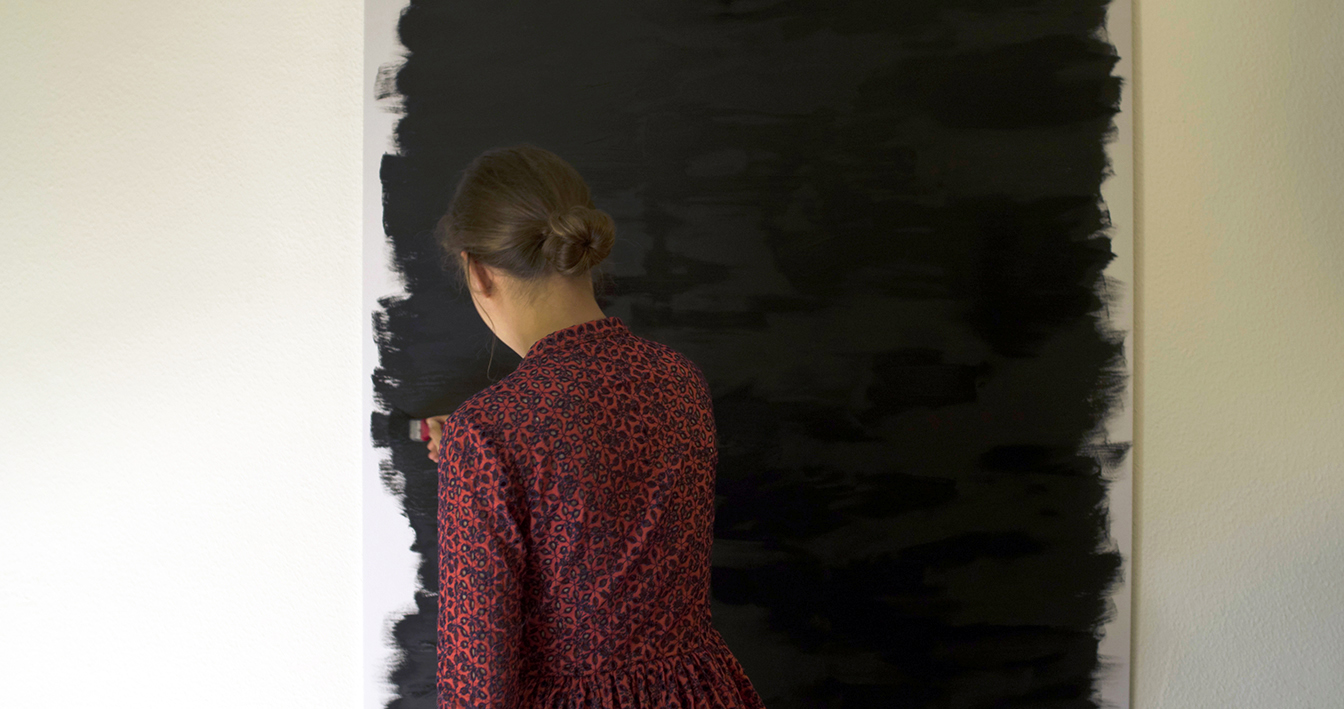
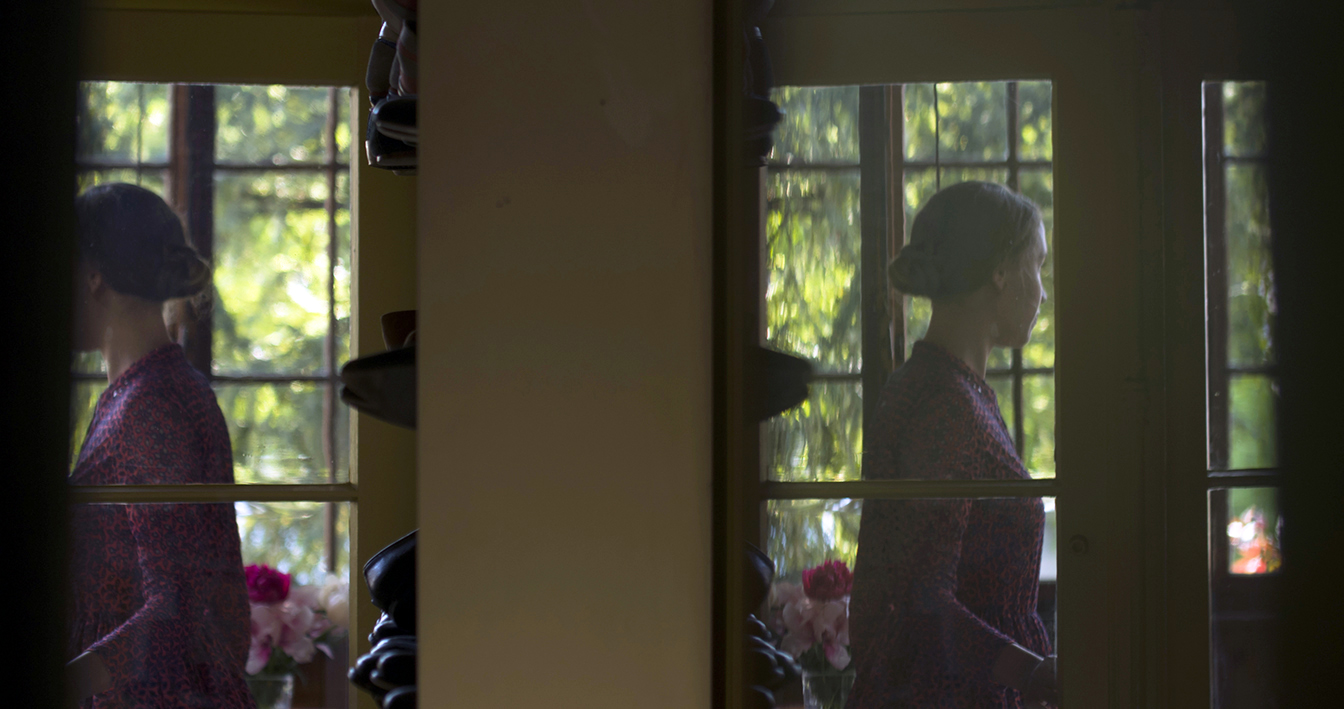
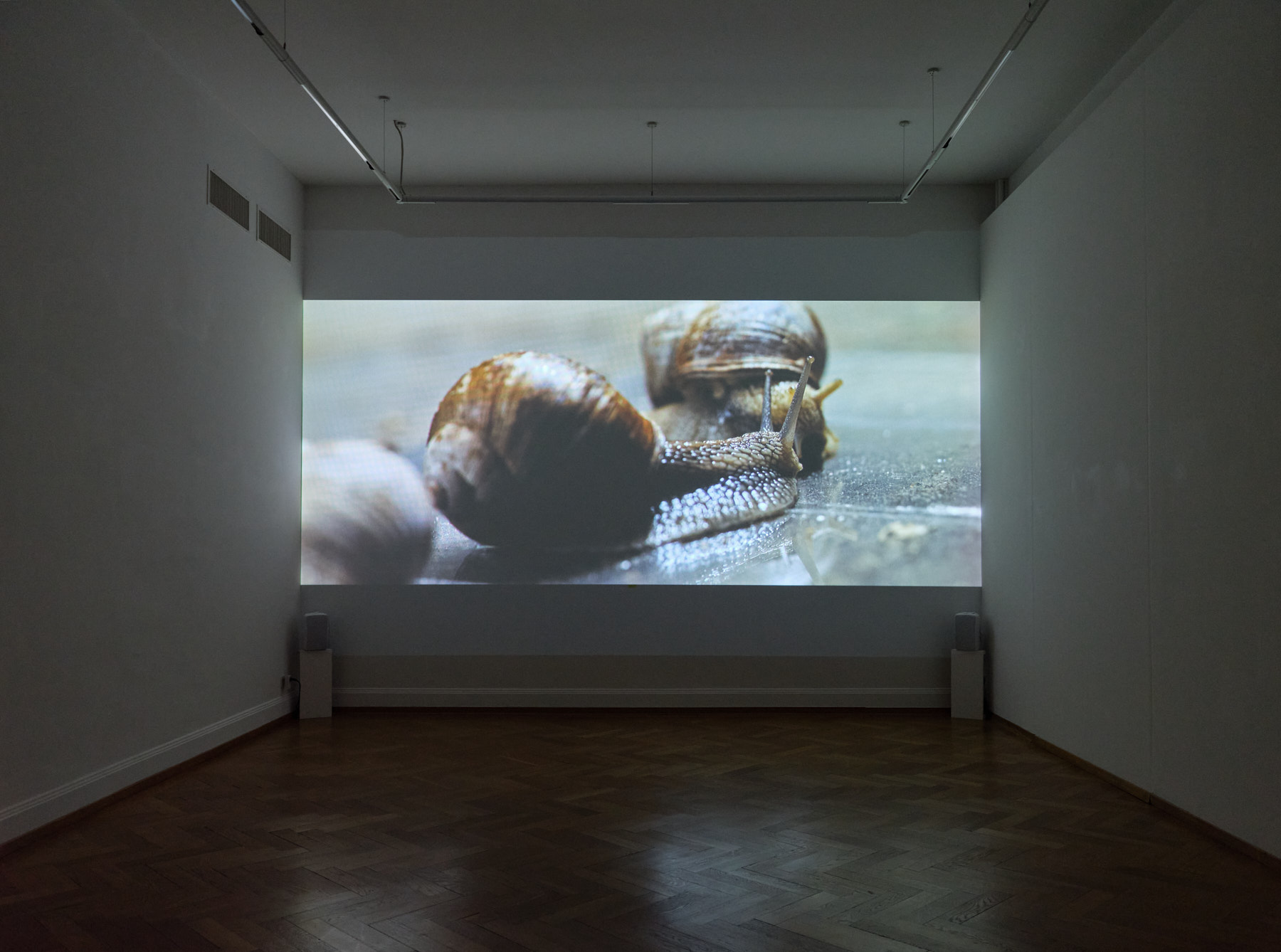 Exhibition Kunstmuseum Thun 2019
Exhibition Kunstmuseum Thun 2019
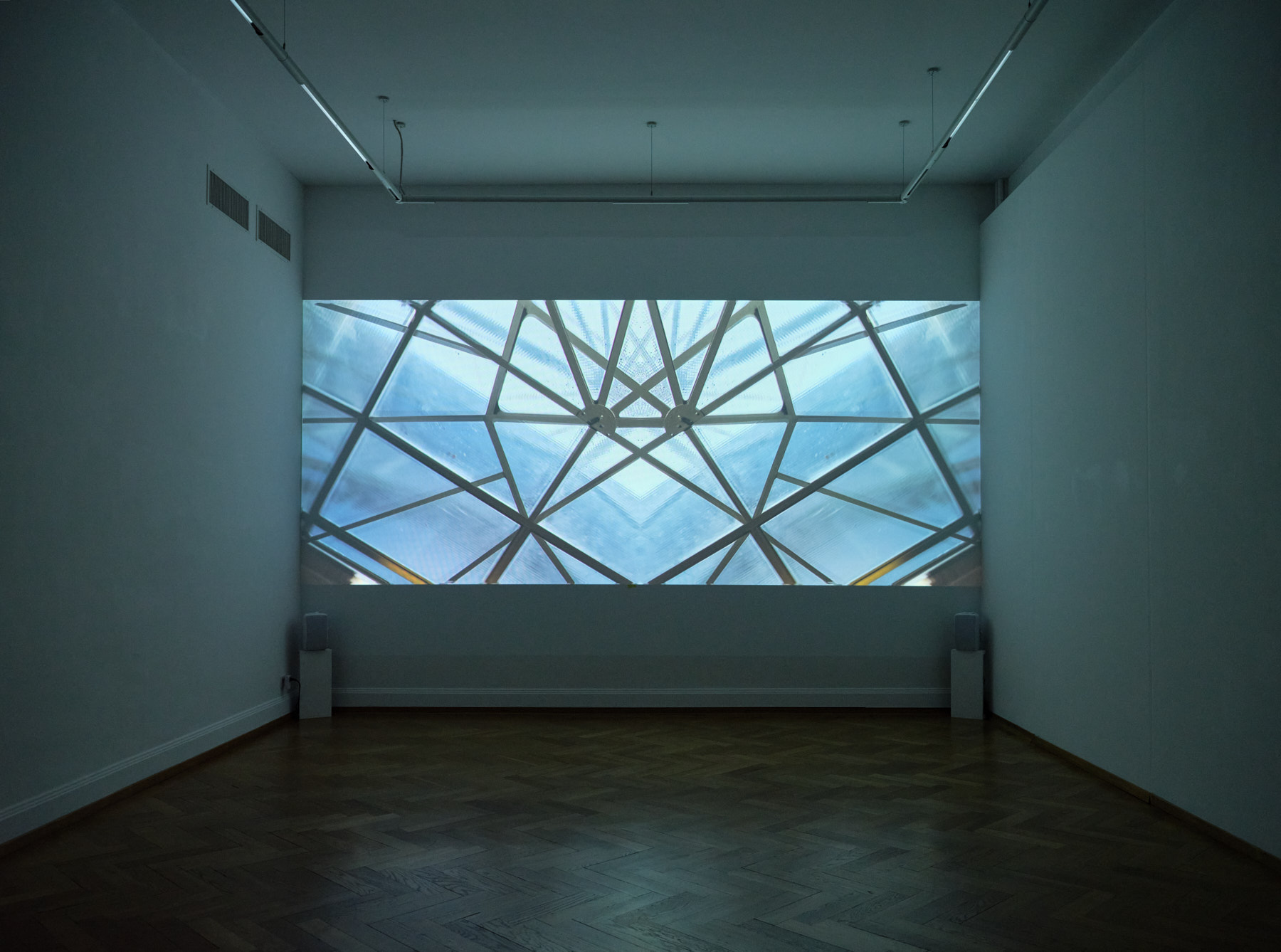
-
Eine junge Frau betritt einen Garten, wirft eine Münze in den Brunnen, so als handle es sich um die Fontana di Trevi, und betritt ein Gebäude. Geätzte Türgläser, knarrende Dielen, frisch polierte Treppengeländer. Dann blickt sie aus dem Zimmer in den Garten und wir ahnen: Irgend etwas ist nicht in Ordnung. Ein bunter Dämon starrt uns an, ein Stuhl gibt ächzende Geräusche von sich, eine Vasenlampe zerbricht mit lautem Knall. Plötzlich werden wir unsicher, ob die Frau allein ist oder ob es eine Doppelgängerin gibt. Indem die Protagonistin immer wieder gespiegelt wird, verführt der Film in ein Geflecht aus vermeintlichen Eindeutigkeiten. Jede Handlung, jedes Bild ist aufgeladen mit Verweisen und Widerhaken – eine Einladung zum Schauen und Geniessen, zum Fürchten und Entdecken. Der Ton, synchron im Bildraum und gleichzeitig nah am Körper aufgezeichnet, schafft einen haptischen Klangraum. Die Katharsis findet der Film in einem poetischen Bild: ein Tanz im Glashaus. Das Musikstück dazu wurde eigens komponiert, der Refrain richtet sich direkt an die Zuschauer: «What am I gonna do with the rest of the day?»
Actors: Laura Day & Sophie Day; cinematographer: Jonas Jäggy; assistant camera operator: Valentin Felber; sound: Mathias Hefel; lighting design: Sebastian Suter; production design: Bettina Grossenbacher; costume designer assistant: Laura Day; standby prop: Marianne Winkelmann; catering: Sabina Stucky; music Composition: James Legeres & Daniel Karrer & Stefan Karrer; editing: Tweaklab & Martina Jung & Bettina Grossenbacher; sound editing: Tobias Koch; colorgrading: Hannes Rüttimann
Credits: Fachausschuss Film und Medienkunst BS/BL; Ernst Göhner Stiftung, Zug; Scheidegger-Thommen Stiftung, Basel; Judith Oehler and Rasso Auberger
Special thanks to: Judith Oehler; Helen Balmer; Eva Heizmann-Balmer; Filmformat; VFB Video/Film-Beleuchtung; Fotofachlabor Pascale Brügger; Trisul/Daniel Jud & Peter Wenger; Papiliorama Kerzers; Claus Donau; Nigel Stephenson; Judith Keller
-
A young woman enters a garden, she throws a coin into the fountain as if it were the Fontana di Trevi and enters the building. Beautifully etched door glass, creaky floorboards, freshly polished shiny banisters. She looks around and gazes into the garden, and we understand that something is amiss. A colorful demon stares at us, a chair exhales, a green vase lamp shatters with a loud bang. Suddenly, we don't know whether she is alone or if a doppelganger, a body double is in the room. By repeatedly mirroring the protagonist, the movie takes the spectators into a web of alleged clarities. Every action, every image is loaded with references and barbs – an invitation to watch and to enjoy, to be frightened and to discover. The sound, synchronously recorded in the image space and close to the body, creates a haptic sound space. Finally, the story culminates in a poetic image: a dance in a glasshouse. The musical piece was specially composed and addresses the audience: “What am I gonna do with the rest of the day?”
Links:
→ Sharjah Art Foundation Film Platform 2019 (programme 14)
→ The Culturist: Sharjah Film Platform 2019
→ ‹Cantonale Berne Jura 2019› Kunstmuseum Thun
→ Galerie Béatrice Brunner Bern 2019
→ ‹Regionale 2021› Ausstellungsraum Klingental
→ Kunstmuseum Thun
→ Artagenda (‹Regionale 2021›)
→ Swissfilms
Downloads:
→ Sharjah Sheikha Hoor Al Qasimi is a Women of Art Substance
→ Sharjah Film Platform (flyer)
→ Ausstellungsraum Klingental (exhibition text)
→ Thun Magazin November 2019
→ ‹Cantonale Berne/Jura 2019› Kunstmuseum Thun
→ Kunstbulletin 12/2020